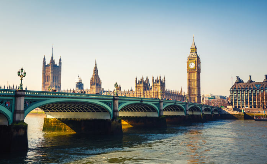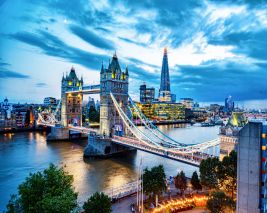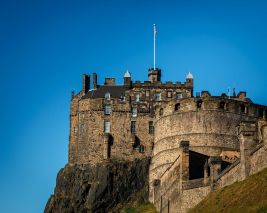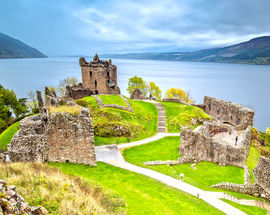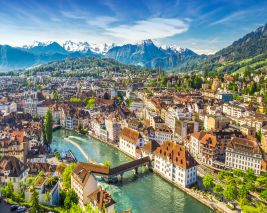By Air
There are many options to fly internally. The UK is very well connected and there are many low-cost airlines such as Ryan Air, Easy Jet, Flybe and Logan air along with the flag carrier airline British Airways. Traveling within the UK has become extremely easy due to the frequency of flights and the number of carriers.
By Bus
The UK has a brilliant network of buses and more than a dozen coach companies competing for providing the best services. This is a slightly more affordable option than flying and is also very scenic. There are over 2000 destinations in the UK covered by various bus routes. In every one of the larger cities of England, Scotland, Wales and Northern Ireland, you will find a coach station with multiple connections. Companies like EasyBus, Megabus or National Express connect cities throughout the UK with their extensive bus route networks. Birmingham, Glasgow, London, Sheffield and many more cities can be accessed using convenient and inexpensive bus travel options.
By Car
A valid international license and your passport are imperative to drive in the UK. The legal age to drive is 17 years. It is a good idea to go through the rules of driving thoroughly with reference to fines, speed limits and third party insurance. The UK uses the imperial system for road signs, all limits and restrictions are in miles and yards. Knowing the equation makes driving a lot
There are three kinds of roads in the UK:
1. Motorways: These are high-speed roads (70mph) where slow vehicles and pedestrians are forbidden. Motorways signs are blue with white text.
2. Primary Roads: These are smaller and slower roads, which can either, be single, or dual carriageways. Signs are green with white text.
3. Non-primary Roads: these are alternative roads that may be more direct and avoid dual carriageways. Signs are in white with black writing.
Driving in and around the UK can be an enriching experience if all legalities are out of the way..
By Boat
The major rivers in the UK are mainly connected with tourist trade and sporting activities rather than traveling from one destination to another.
By Train
The railway system in the UK is the oldest in the world. It is home to around 2,563 train stations and the network integrates villages, towns, and cities. This does not include the train stations on London Underground and the heritage railways dotted across the country. Three other major train stations outside the capital are Birmingham New Street, Glasgow Central, and Manchester Piccadilly, which each serve and provide regular services to major cities all across the UK. The three stations ensure representative coverage of all areas of the UK; The Midlands, The North of England and Scotland.
The major mainline train stations you can expect to travel from and to in London include Waterloo, Paddington and King's Cross.
Outstation trains can be boarded from St. Pancras. The train stations are very well connected and hence they have become the lifeline of the local people. Most listed buildings stem around stations.
Local Transport
UK has a state-of-the-art transport system. Public transport is very well integrated and seamlessly connects to each other at major junctions and makes it effortless for travellers to move around with and outside the cities.





